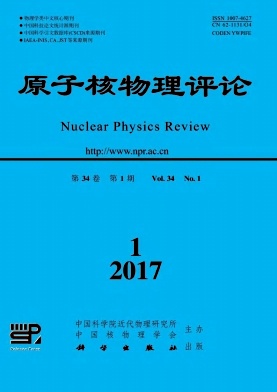|
[1]
|
RAFELSKI J. Phys Lett B, 1980, 91: 281; RAFELSKI J, Phys Lett B, 1988, 207: 371. |
|
[2]
|
GIBSON B E, HUNGERFORD E VⅢ. Phys Rep, 1995, 257: 349. |
|
[3]
|
HASHIMOTO O, TAMURA H. Prog Part Nucl Phys, 2006, 57: 564. |
|
[4]
|
DANYSZ M, PNIEWSKI J. Philos Mag, 1953, 44: 348. |
|
[5]
|
CUGNON J, DENEYE P, VANDERMEULEN J. Nucl Phys A, 1989, 500: 701; Phys Rev C, 1990, 41: 1701. |
|
[6]
|
KO C M, YUAN R. Phys Lett B, 1987, 192: 31. |
|
[7]
|
LARIONOV A B, PSHENICHNOV I A, MISHUSTIN I N, et al. Phys Rev C, 2009, 80: 021601(R); Larionov A B. Nucl Sci Tech, 2015, 26: S20506. |
|
[8]
|
BONDORF J P, BOTVINA A S, ILJINOV A S, et al. Phys Rep, 1995, 257: 133. |
|
[9]
|
FENG Z Q, LENSKE H. Phys Rev C, 2014, 89: 044617; FENG Z Q. Nucl Sci Tech, 2015, 26: S20512; FENG Z Q. Phys Rev. C, 2016, 93: 041601(R). |
|
[10]
|
FENG Z Q. Phys Rev C, 2011, 84: 024610; FENG Z Q. Phys Rev C, 2012, 85: 014604; FENG Z Q. Nucl Phys A, 2012, 878: 3; FENG Z Q. Phys Lett B, 2012, 707: 83. |
|
[11]
|
FENG Z Q. Phys Rev C, 2013, 87: 064605; FENG Z Q. Nucl Phys A, 2013, 919: 32; FENG Z Q, XIE W J, JIN G M, Phys Rev C, 2014, 90: 064604. |
|
[12]
|
FENG Z Q, XIE W J, CHEN P H, et al. Phys Rev C, 2015, 92: 044604. |
|
[13]
|
CÔNTÉ J, LACOMBE M, LOISEAU B, et al. Phys Rev Lett, 1982, 48: 1319. |
|
[14]
|
BUSS O, GAITANOS T, GALLMEISTER K, et al. Phys Rep, 2012, 512: 1. |
|
[15]
|
GOLUBEVA E S, ILJINOV A S, KRIPPA B V, et al. Nucl Phys A, 1992, 537: 393. |
|
[16]
|
LARIONOV A B, GAITANOS T, MOSEL U. Phys Rev C, 2012, 85: 024614. |
|
[17]
|
LUBINSKI P, GROCHULSKA A, VON EGIDY T, et al. Phys Rev C, 2002, 66: 044616. |
|
[18]
|
CHARITY R J, MCMAHAN M A, WOZNIAK G J, et al. Nucl Phys A, 1988, 483: 371. |






 甘公网安备 62010202000723号
甘公网安备 62010202000723号 DownLoad:
DownLoad: